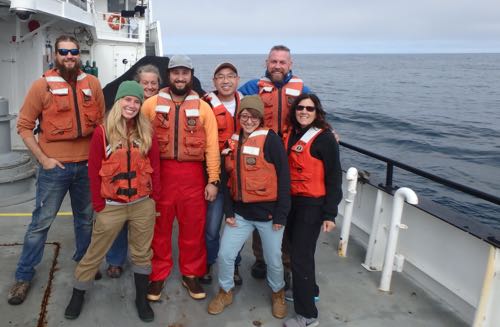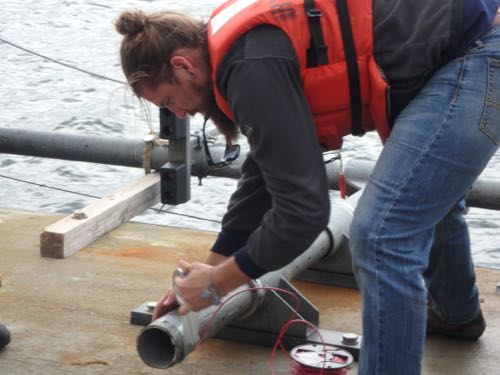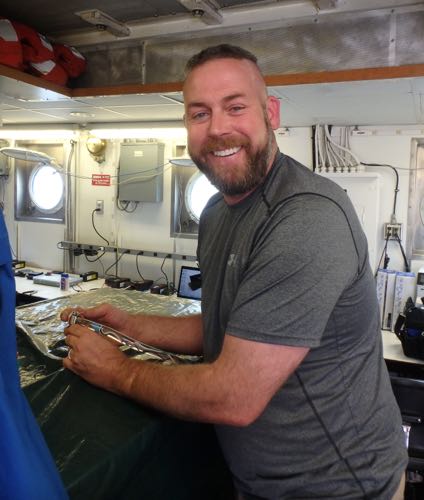 Team Jellyfish night and day crews meet at last on the Oceanus.
Team Jellyfish night and day crews meet at last on the Oceanus.
To get a glimpse of what's going on beneath the surface, the science team is using a sonar-imaging device called the ARIS (Adaptive Resolution Imaging Sonar). The ARIS gives a visual image of larger plankton and animals. At each station, the ARIS is used and the data collected from it is analyzed through identification software.
 Ben Binder arranges the wiring on the ARIS.
Ben Binder arranges the wiring on the ARIS.
Since the ARIS has a relatively low resolution compared to digital cameras, larger organisms can be sampled. With the ARIS, multiple beams of sound are working simultaneously. Sound waves are being sent out and if something is in the path of the sound, it is recognized as some kind of organism. It forms a large cone-shape in which all the organisms in it can be recorded and/or visualized. The information from ARIS can be counted by using ARIS software and the depths and times at which these organisms are found are also recorded.
Here are some images collected from ARIS. See if you can identify the organisms!
Polar Profile: Stuart Cook
 Stuart Cook, Research Specialist, works on the ZOOVIS.
Stuart Cook, Research Specialist, works on the ZOOVIS.
Stuart hails from Baton Rouge, LA and is the research specialist on this cruise. He developed the ZOOVIS, a tool to identify and quantify plankton and microorganisms. His advice for students who might be interested in being a research specialist is to focus on marine technical robotics. Interested students should contact the Marine Technology Society.


Comments
Add new comment